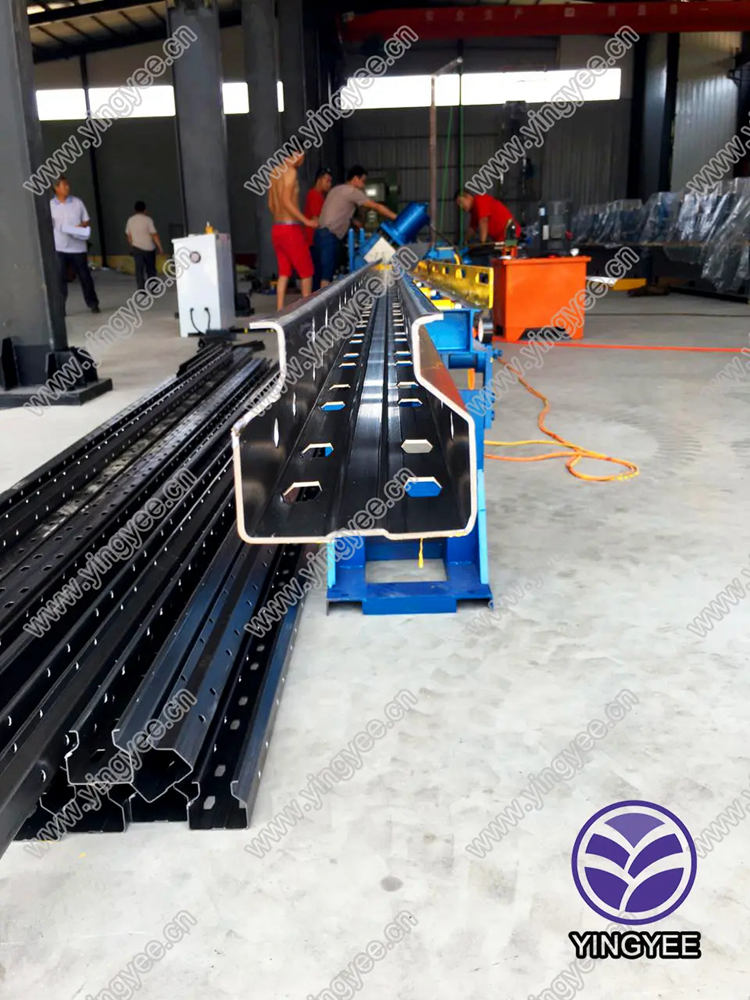
Understanding Rolling Door Roll Forming Machines Benefits and Applications
In the world of manufacturing, efficiency and precision are paramount, especially when it comes to producing materials for architectural structures and commercial facilities. One essential piece of equipment that has revolutionized the production of rolling doors is the rolling door roll forming machine. This advanced technology not only streamlines the manufacturing process but also enhances the quality and durability of the final product. In this article, we will delve into the functionality, benefits, and applications of rolling door roll forming machines.
What is a Rolling Door Roll Forming Machine?
A rolling door roll forming machine is a specialized piece of machinery designed to create rolling doors from metal sheets, typically steel or aluminum. The roll forming process involves feeding a flat metal strip through a series of rollers, which progressively shape the material into the desired profile. This process not only allows for the continuous production of long metal sheets but also ensures uniformity and accuracy in the dimensions of the finished product.
Key Components of a Rolling Door Roll Forming Machine
The machine consists of several critical components that work in tandem to produce high-quality rolling doors. These components include
1. Decoiler This component unwinds the metal coil, feeding the flat strip into the machine. 2. Roll Forming Stations These are a series of rollers that gradually shape the metal strip into the desired profile. Each station is designed to perform a specific adjustment to the material, leading to the final shape.
3. Cutting Mechanism After the desired shape has been formed, a cutting mechanism, usually a hydraulic or saw cutter, trims the rolling door to the specified length.
4. Control System Modern machines are equipped with advanced control systems that allow for precise adjustments and monitoring of the production process. Some machines even integrate computer numerical control (CNC) technology for enhanced automation.
5. Output Table Once the doors are cut, they are transferred to an output table for easy handling and packaging.
Benefits of Using Rolling Door Roll Forming Machines
1. Efficiency One of the most significant advantages of using a rolling door roll forming machine is its efficiency. The continuous feeding and shaping of material allow for high production rates, significantly reducing manufacturing time.

2. Customization These machines can be easily adjusted to create a variety of door designs and sizes, offering manufacturers the flexibility to cater to specific customer needs.
3. Cost-Effectiveness By optimizing the production process, manufacturers can reduce labor costs and material waste. This leads to a more cost-effective manufacturing process, which can ultimately translate to lower prices for consumers.
4. Durability and Quality The roll forming process results in a more robust material structure, improving the durability of the final product. Additionally, because the process is uniform, rolling doors produced by these machines tend to have superior quality and finish compared to those made by traditional methods.
5. Space-Saving Design Rolling doors produced using this machinery can be installed in a way that optimizes space, making them ideal for commercial and industrial applications where space can be limited.
Applications of Rolling Door Roll Forming Machines
Rolling doors find applications across various industries due to their versatility and ease of use. Some common applications include
1. Commercial Buildings Rolling doors are frequently used in warehouses, distribution centers, and retail storefronts, providing security and ease of access.
2. Industrial Facilities Factories and manufacturing plants often rely on rolling doors for loading bays and service entrances, where efficiency and durability are critical.
3. Residential Garages Many homeowners opt for rolling doors for their garages due to their space-saving characteristics and aesthetic appeal.
4. Fire Stations and Emergency Services Rolling doors are often used in fire stations and other emergency service facilities due to their quick open-and-close functionality, allowing for rapid response times.
Conclusion
The rolling door roll forming machine is a vital tool in the modern manufacturing landscape, enabling the production of high-quality, durable rolling doors for a myriad of applications. With its efficiency, customization capabilities, and cost-effectiveness, this technology represents a significant advancement in the industry, contributing to safer, more functional, and aesthetically pleasing environments across various sectors. As technology continues to evolve, we can anticipate even greater innovations in the roll forming process, ensuring that rolling doors remain a staple in architectural design and construction for years to come.